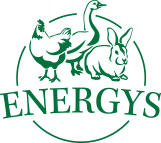Rabbits
Poultry
Laying hens
Quails
Guinea pigs
Pigs
Ostriches
Sheep and goats
Pigeons
Pheasants
Forest animals
Landes Goose
They have been bred since time immemorial in southern France. It is a rangy, medium-weight, fast-growing goose with a peaceful temperament, hardy constitution and compact, strongly-built body carried slightly at an angle, suitable for feeding up for fatty meat. It is reared in grey-brown (wild) and white colourings.
The body is large with a standout double underbelly. In the first year a goose lays about 25 eggs, in the next year this increases to 30 to 35 eggs. The lowest weight of batch eggs is 140 g. The instinct to sit on the eggs has been suppressed in the geese, so the eggs have to be incubated in artificial hatching places. Standard weights are regarded as being 6.5 to 7.3 kg for a gander and 5.5 to 6.3 kg for a goose. Both sexes are ringed with rings with an internal diameter of 27 mm. Breeding aim: the weight of a batch egg in the first year is 150 g, in the second it is 170 g, porcelain white shell.
They were first imported to Slovakia to the Research Institute for Raising and Breeding Poultry (Výskumný ústav chovu a šľachtenia hydiny, VÚCHŠH) in Ivanka pri Dunaji from Hungary in 1967, subsequently in 1969 from Hungary and France. At VÚCHŠH they were used as the starting line for the creation of meat hybrids (Malík, V., 1991).
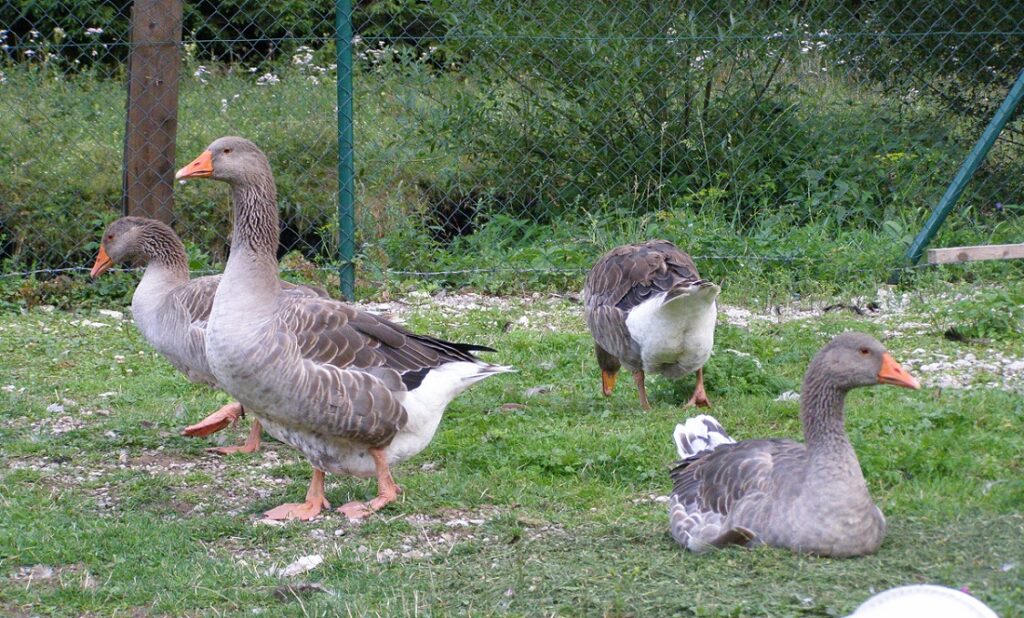
A goose sexually matures at an age of nine months and starts laying eggs at an age of 310 to 320 days. A gander reaches normal sexual activity at an age of two years. A gander enjoys its best reproductive activity between the second and fourth year, whereas it is between the second and sixth year for a goose.
Determining the sex of young geese is not always easy based on the external characteristics. One reliable method is feeling the pelvic bones. In the case of a gander there is only a small aperture; they are more distant in the case of a goose. In the case of a gander we can also try to find the penis. A helper places an animal we think is a gander on its back (for example on a table), using our fingers we feel the distance between its pelvic bones, if it is a gander we can push its not-yet-developed penis from the cloaca. In the case of older animals determination of sex is simple, a healthy gander is more bulky than a goose, it has a larger head, it honks a lot and walks upright.
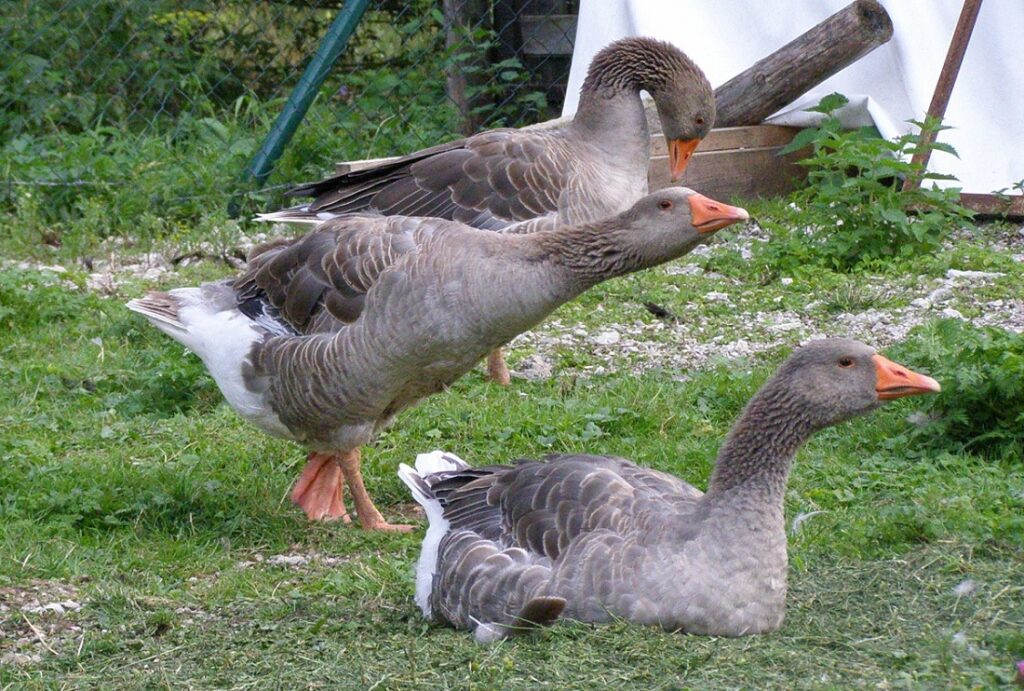
Landes ganders are fertile even at an age of five years, so, unless a breeder adds geese that are its descendants to a flock, it does not have to be changed. In small-breeder conditions geese are suitable for breeding for 10 years and more. Everything depends on the care taken by the breeder, treatment, feeding and housing. Obviously as well as a breeder’s requirements concerning the economics of breeding.
It is important to prepare geese and ganders well. Flocks must be set up in the fall. Otherwise it could happen that no later than the winter the gander allocated to geese will be rejected by them and eggs will not be fertilized. Some sources state that a gander is only fertile in season for about 28 days, so if the geese are not willing to mate and ready to lay eggs at this time, in the case of earlier or later breeding a lot of eggs will not be fertilized. We set up flocks in such a manner that we allocate no more than four to five geese to one gander. A breeding flock should overnight in a goose house, the whole day it should have available a grassy run that provides pasture for the geese. We can have 1 to 1.5 geese in 1 sqm of floor area of a breeding goose house. A goose house will also contain egg nests, so a small, six-member flock should have a goose house with an area of 3 x 2 m. Occasionally it happens that ganders have a tendency towards monogamy and so there can be a lot of unfertilized eggs. Breeders that raise geese to a breed standard often make use of pair breeding, so that they can precisely recognise the origin of every hatched gosling not only in terms of the father, but also in terms of the mother.
A goose is herbivorous, able to utilize vegetable feed without the need for feed of animal origin. Before laying and during laying of eggs, we feed them with full-value feed blends. A modern small-scale breeder does not have to rely on making his own feed doses, but can give goslings and adult geese ready-made feed blends.
When rearing goslings and taking care of adult geese, grazing is the most natural and also most economical method of feeding. We get goslings used to pasture in an enclosure that has a shelter where they can hide in the shade in the case of summer sunshine. Access to drinking water is important. It is a good idea to locate the water supply in such a manner that the goslings can only drink from it, not bathe in it.
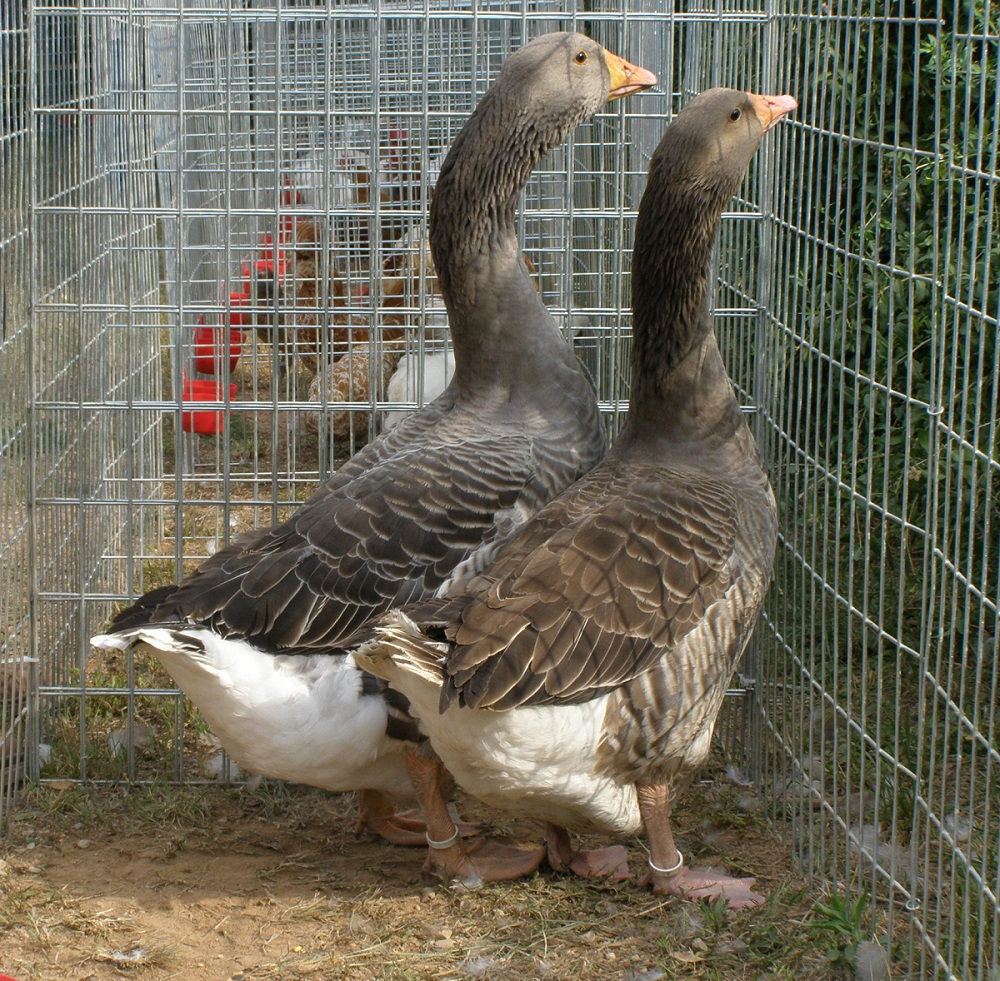
Geese are water fowl, so they should have available also water for bathing. Natural water surfaces are ideal, but not many breeders have them available today. We therefore have to provide them with a substitute, a large plastic or aluminium vessel in which we change the water daily.
Landes geese do not hatch naturally, because long selection has suppressed the instinct for sitting on eggs. Therefore, the eggs have to be incubated in an electric hatching point. This is related to the fact that a breeder has to teach goslings to accept food in the first few days. We submit food to goslings in the first days after hatching on a flat surface, for example on a wide plate, several times a day. In the first 14 days we feed them with a mix for goslings. We remove uneaten leftovers that have been trodden on by the goslings after feeding and wash the plate. We repeat this after every feeding, in the first few days every two hours. Water has to be available constantly, but we do not place it near the feeding plate, but on the opposite side of the enclosure. When goslings are reliably accepting food from a plate, we start to place feed in normal feeding troughs for poultry. They have to be long, so that every gosling finds space from which to feed. A feed dose can be only feed mix, but also finely chopped green feed – dandelions, nettles, chickweed – mixed with granulated or loose feed mix.
In the past, at the end of the breeding season geese had their feathers plucked. This was to obtain feathers and use them to fill covers and pillows. Plucking, obtaining feathers from live geese, is performed at the time their feathers are naturally being exchanged. Before plucking, we offer geese a chance to bathe, so that the feathers are clean. We pluck feathers in the direction of growth.
We place a goose head up on our thighs, where the head and neck face down between our calves, which hold the neck. In our left hand (if we are right-handed) we hold the goose by the legs and pull the feathers with our right hand in the direction of growth from the breast and belly. So that we can pull the feathers from the back and part of the sides we turn the goose into the same position on its belly. For about seven days it is necessary to provide plucked geese with full-value nutrition, so their feathers are renewed fast. After plucking we sort the feathers into types of down.
Text and photo Dušan Barlík
Related posts
16. March 2022
When selecting feed (not only) for poultry, it is essential to base it on the purpose of the breeding or fattening phase. Energys hobby feeds accentuate these needs, so you are sure to choose whatever stage of development your poultry is in. But how do you choose the right feed and which is the most…
16. March 2022
When selecting feed (not only) for poultry, it is essential to base it on the purpose of the breeding or fattening phase. Energys hobby feeds accentuate these needs, so you are sure to choose whatever stage of development your poultry is in. But how do you choose the right feed and which is the most…
9. December 2021
While there are technological procedures for the rearing and fattening of common species and utility types of poultry, there are only few instructions for the so-called non-traditional poultry species, but also for runners with potential for commercial use. In this article you will find basic information on the breeding of Barbary and Mallard ducks.
22. February 2021
Spring is the period when chickens start to be fattened in domestic conditions. For the purposes of meat production, it is best to use specially-bred hybrid meat breeds that have the genetic properties of fast growth and high muscle mass. These breeds are called broiler chickens or broilers.
20. November 2020
When feeding and fattening ducks and geese, it is important to be aware of the differences between the main nutritional requirements. Experienced breeders are familiar at least with the basic differences between geese, ducks and Muscovy ducks.
Related products
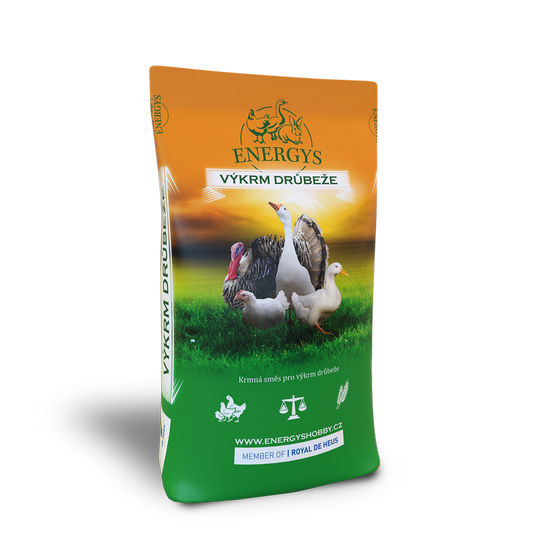
POULTRY UNI 30
A mashed concentrate for fattening of all categories of poultry, which includes the highest quality soja. It is mixed with cereals in a ratio of 20-40% (by type or phase of fattening). It contributes to fast growth and a high meat content. It does not contain coccidiostats.

BROILER MAXI
Feed for the final phase of fattening broilers. Supports a high meat content and a delicate meat taste. Start using it 5 or more days before slaughter. Does not contain coccidiostatics.

BROILER MIDI FORTE
A granulated feed mix for the intensive fattening of broilers from 15 days of age to a minimum of 5 days before ending feeding up. The Coccidiostat included lowers mortality during fattening. For the next phase of fattening Broiler MAXI is a suitable mix.

BROILER MINI FORTE
A ground feed mix with Coccidosistats, for the intensive feeding of broiler chickens up to 14 days of age and a support to fast growth a an excellent state of health in your broliers-

DUCK MINI
A high quality ground mix for fattening ducks and geese up to their 2nd week. It is suitable for fast growth and high meat content.

TURKEY MAXI
Feed for the final stage of turkey fattening. Use from the 13th week of age. It does not contain a coccidiostat.

TURKEY MIDI FORTE
A high quality granulated feed with coccidiostats for feeding turkeys from 5 to 12 weeks of age. It is the basis for fast growth, high meat content and an excellent state of health of your turkeys. The coccidiostat content lowers mortality during feeding. It continues on from feeding with Turkey Mini Forte. The live weight for turkeys at the end of this period should be around 5.9 kg for hen turkeys and 8.9 kg for cocks.

TURKEY MINI FORTE
A ground mix with Coccidiostats for fattening turkeys up to an age of 4 weeks. It is the basis for high meat content. Afterwards use the Turkey Midi Forte mix.

DUCK MAXI
A granulated mix for feeding ducks and geese from 3 weeks of age up to slaughter. The nutrients it contains support fast growth , a high meat content and a delicate meat taste.
